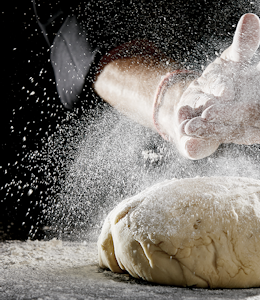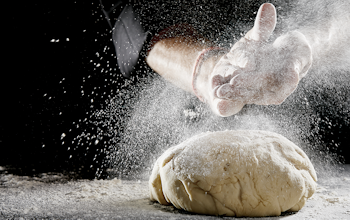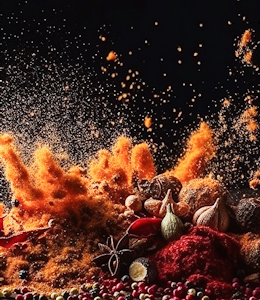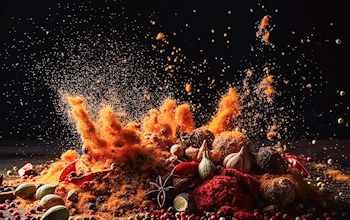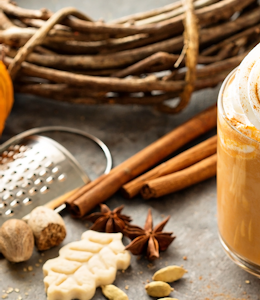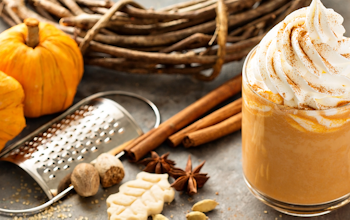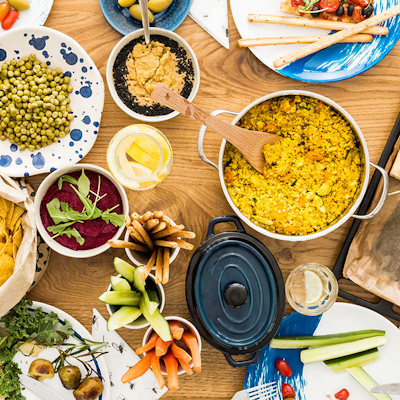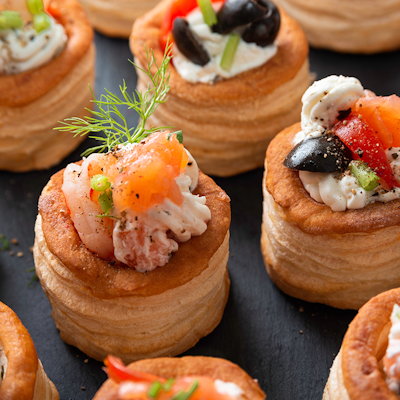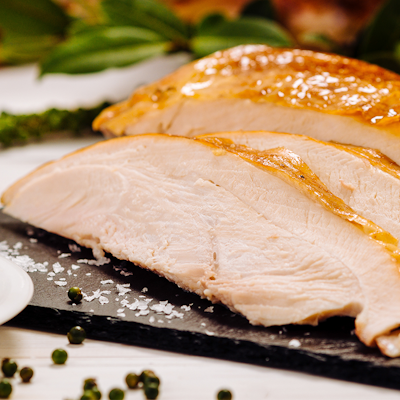What is a good side dish with curry?
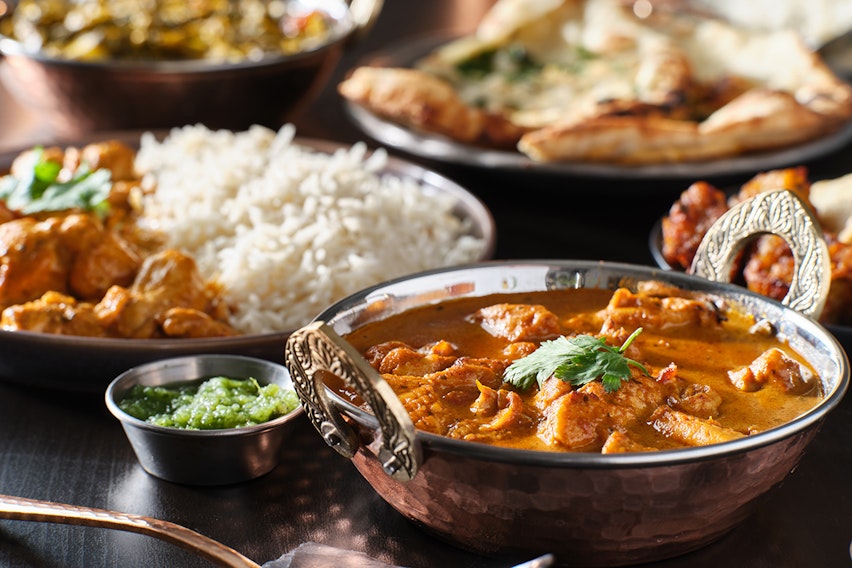
We’re rounding up some simple curry side dishes to make your mouth water. Why? We’re a nation of curry lovers, but no spicy feast is complete without some tasty accompaniments to complement the heat…
Here’s the best curry side dishes list:
- Rice
- Naan
- Potatoes
- Samosas
- Saag (Spinach)
- Chickpeas
Now let’s find out all about them (and some top tips for making them)...
Rice
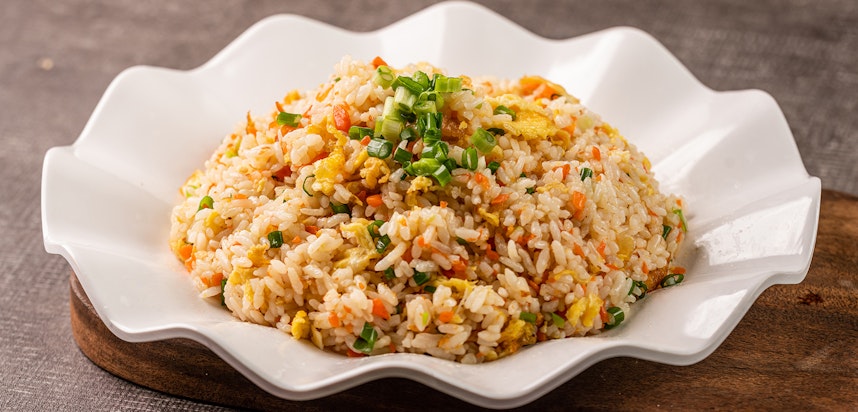
What is rice?
Rice is a type of grain, with the common Asian rice being the seed of the grass species Oryza sativa and the less ubiquitous African rice being the seed of the grass species Oryza glaberrima. Asian rice was domesticated in China over 10,000 years ago, and rice remains a staple food for many global cuisines, and is produced all over the world (though only in certain areas with the right conditions).
Rice is dense in carbohydrates and calories, but it is also rich in protein, vitamins and minerals, and is made up of 2 types of starch molecules - amylose and amylopectin. The proportions of these starches determine whether firmness and texture of the rice once it has been cooked. For instance, those rices with more amylose will be fluffier and firmer than those with more amylopectin. You can find our guide to the different types of rice here.
What kind of rice goes well with curry?
Rice that is fluffy and doesn’t stick together is the best for eating with curry, as it will soak up all the sauce and flavour, so long grain varieties such as jasmine and basmati are the most popular in South Asian cuisine.
Though plain, cooked rice is perfectly fine for serving with curry and absorbing the flavours, sometimes other ingredients are added to enhance it - jeera rice adds warmth and earthy punch with the addition of cumin seeds, whilst lemon juice can be added to jasmine rice to pull out other curry flavours and add bite. Peshwari rice contains coconut cream and raisins and is a great accompaniment to Korma, whilst the popular mixed rice dish Biryani sees the grain cooked with spices such as garlic, coriander, ginger, saffron and cinnamon and meat added.
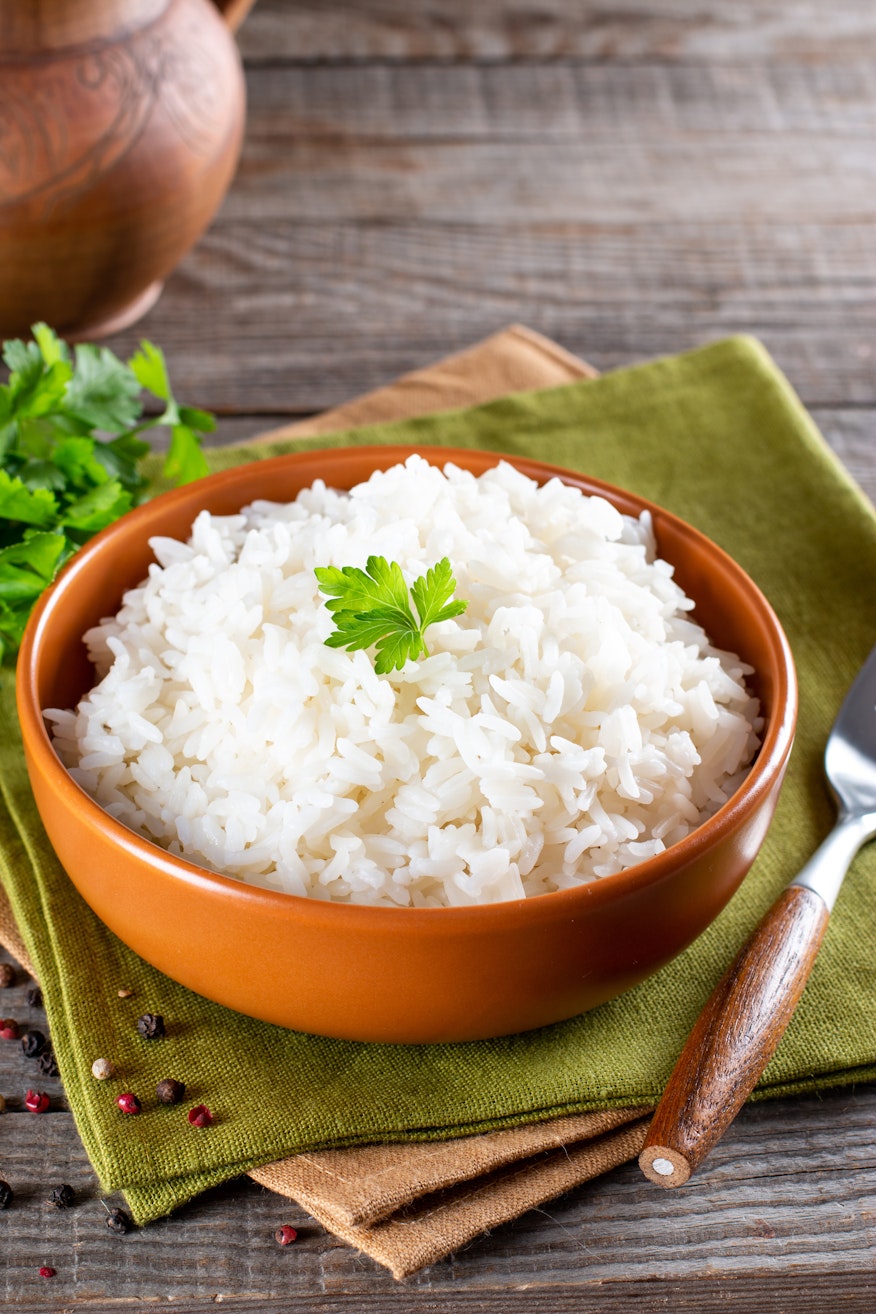
Top tip
Fried rice is used across several types of Asian cuisine, and is a great side dish for all spice levels of curry. If making it, use either leftover rice or cook the rice in advance and allow it to chill in the fridge overnight before frying it and adding other ingredients. The time spent chilling will leave it firmer and less likely to clump together and turn to mush in the pan.
Allergy alert!
Rice is not among the 14 major food allergens, unlike other popular “carb” and “grain” foods like bread and pasta, which derive from Cereals containing Gluten.
Naan
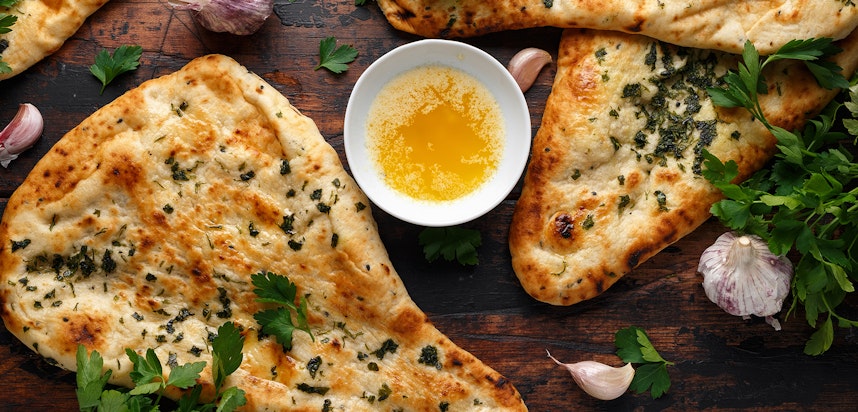
What is naan?
Naan bread is a type of leavened flatbread that can be either fried, or baked in a tandoor oven, popular in many Asian cuisines and often served alongside curry. The earliest mention of naan comes from the memoirs of 14th century Indo-Persian Sufi poet Amir Khusrau.
Though similar to other flatbreads like pita, naan is softer, denser and fluffier than others (and consequently contains more sugars and carbohydrates), and has signature golden brown bubbles on the surface. Naan bread is made from flour, milk, butter or ghee and yeast, as well as a little salt and water.
You may also be interested in…
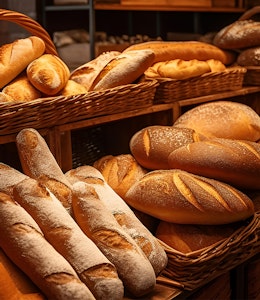
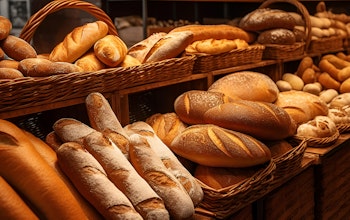
You may also be interested in…
The best bread for diabetics, the best bread for cheese toasties and more
ReadWhat kind of flatbread goes well with curry?
Naan is a classic and beloved accompaniment to curry, and comes in many different varieties. Garlic naan brings out the flavours of curry, and cheese naan is also popular - though not traditional. Both spicy and sweet curries can be complemented by peshwari naan, which has a filling of coconut, almonds and sultanas or raisins. Keema naan is filled with minced lamb, and can add substance to a meal, whilst Roghni naan is a light naan with a golden crust and subtle flavour from nigella and sesame seeds.
Chapati (also known as roti) is a similar flatbread to naan, but made with wholewheat flour, water, salt and oil - perfect for those looking for a healthier option.
Top tip
If frying a naan you need to monitor the heat carefully - turning it down if the bubbles puff up and turn brown too fast and it begins to burn, and turning it up if it is remaining flat and not bubbling up at all, as this will lead to it becoming oily.
Allergy alert!
Naan bread, along with other flatbreads, is usually made with wheat flour. Wheat is a Cereal containing Gluten, one of the 14 major food allergens.
Many flatbreads are also made with butter or ghee - derived from Milk, another major allergen. Some varieties of naan are topped with Sesame seeds - Sesame is another major food allergen.
Potatoes
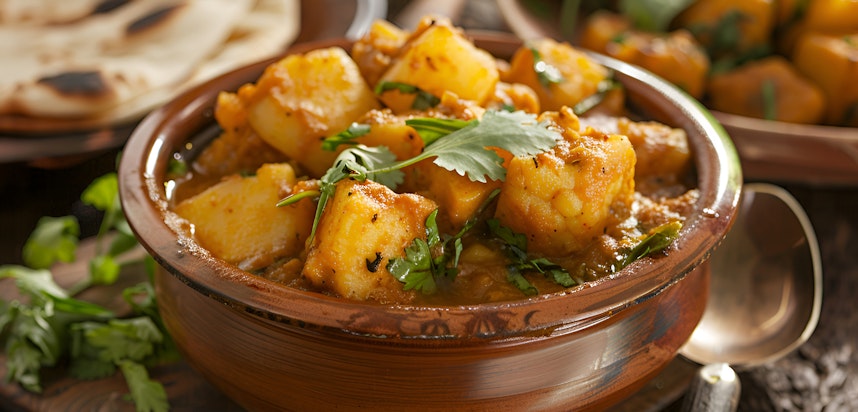
What are potatoes?
Potatoes are a root vegetable - tubers of the perennial nightshade plant Solanum tuberosum - native to the Americas and known for being rich in starch.
Though a vegetable, in food groups potatoes are usually considered a carbohydrate, though they contain no fat or cholesterol and are rich in vitamins such as vitamin C (particularly in their skin) and fibre. Potatoes are highly versatile and eaten all around the world, a staple of many cuisines.
What kind of potatoes go well with curry?
You can eat most types of potato with curry, though New Potatoes should be avoided. Bombay potatoes are a very popular dish to eat alongside curry, made by parboiling and cubing waxy potatoes and then frying them with spices - typically cumin, garam masala, turmeric, chilli powder, mustard seeds and garlic. They are sometimes then mixed with crushed tomatoes and onions but not always. Bombay potatoes are great for mopping up a curry and absorbing the sauce. Aloo Masala (roughly translated as potato with spices) is an aromatic potato dish that complements the spices in curry, made by boiling then mashing potatoes and sautéeing with diced onions, tomatoes, ginger, garlic and other herbs and spices, according to taste. For a spicier take, you can opt for aloo chokha - a similar dish that has the addition of chopped chillies and mustard oil.
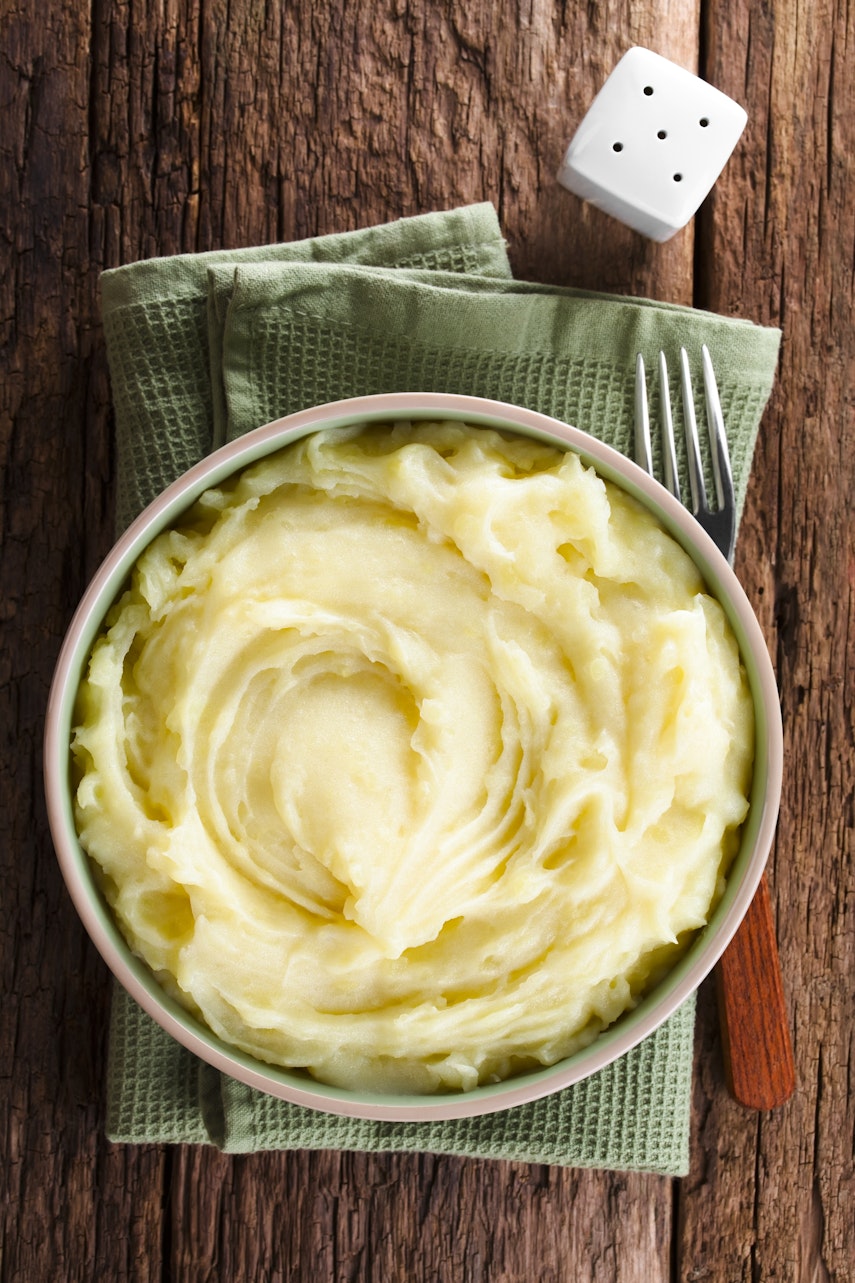
Top tip
Try adding amchoor to your potato-based curry side dishes - made from dried, unripe green mangoes that have been ground into a powder, it works well with the subtlety of potatoes and adds a tart but fruity kick that you don’t get with other spices.
Allergy alert!
Whilst potatoes themselves are not an allergen ingredient, in Indian cooking they are frequently cooked with ghee, a type of butter - made from Milk, a major allergen. Some potato dishes also count mustard seeds among the ingredients - Mustard is another major allergen.
Samosas
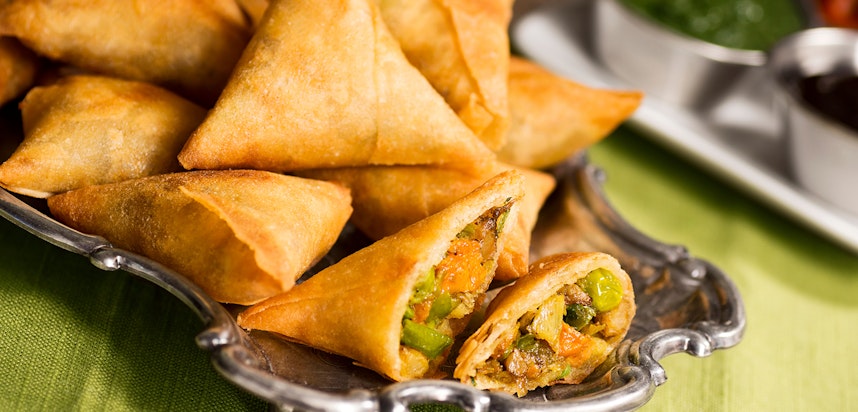
What are samosas?
Named from the Persian word “Sambosag”, samosas are a type of stuffed pastry, especially popular in South and South East Asian cuisine. The pastry itself is made from “maida” flour, and the samosa is usually filled with a mixture of vegetables, mashed potato and spices, and sometimes meat, before being shaped into a triangle or crescent shape and deep fried in oil.
Because of this, they are not considered healthy, and are high in saturated fats, despite containing typically healthy ingredients such as lentils, peas, green chilli and onions. Cinnamon, ginger and cumin are spices commonly used for samosas.
What kind of samosa goes well with curry?
Samosas can be vegetarian or non-vegetarian, with the plant-based aloo samosa being one of the most popular. With a filling mainly composed of spicy mashed potatoes, it is a hearty side dish to make a meal more filling, though samosa chaat - in which the samosa is layered with chickpea curry, is another more substantial way of enjoying the dish. Paneer samosa, with a filling of the Indian cheese that absorbs all the flavours of the spices and onion, is another great choice for soaking up curry, and for meat lovers, Keema samosa contains minced lamb, yoghurt and spices - a moreish combination.
Top tip
For a healthier take on samosas, cook them in an air fryer - it will greatly reduce the amount of oil required, and therefore the amount of saturated fat and calories.
Allergy alert!
Samosas are made with maida flour, which is made from wheat - a Cereal containing Gluten and one of the major allergens. Depending on the filling a samosa might also include allergens such as Milk (from yoghurt, paneer or ghee), Mustard or Celery.
Saag (Spinach)
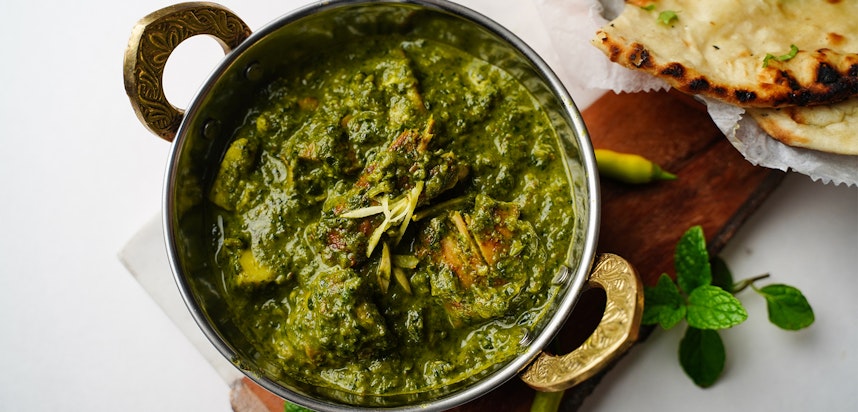
What is saag?
Sometimes just used interchangeably with “spinach”, saag (also spelled sag) generally refers to the South Asian vegetable dish made with Indian subcontinental leafy green vegetables. These greens can include spinach, mustard greens, kale, bok choi, collard greens and even broccoli.
Saag is frequently eaten as a side dish to curry, or alone alongside naan or rice.
What kind of saag goes well with curry?
The most famous type of saag to eat with curry is saag aloo, in which the spinach or greens are fried with spices and par-boiled potatoes. Saag paneer is a less carb-heavy dish, in which the greens are cooked or fried and mixed with cubes or slices of fried paneer cheese and thickened with coconut milk. For a spicier take more in line with curry, try Sarson Ka Saag, which goes heavy on the spicy mustard greens.
Top tip
Many saag dishes include mustard greens, which many people find strong to the point of too bitter. To avoid this, either substitute some of the mustard greens for the milder, sweeter spinach, or add a small amount of sugar while cooking.
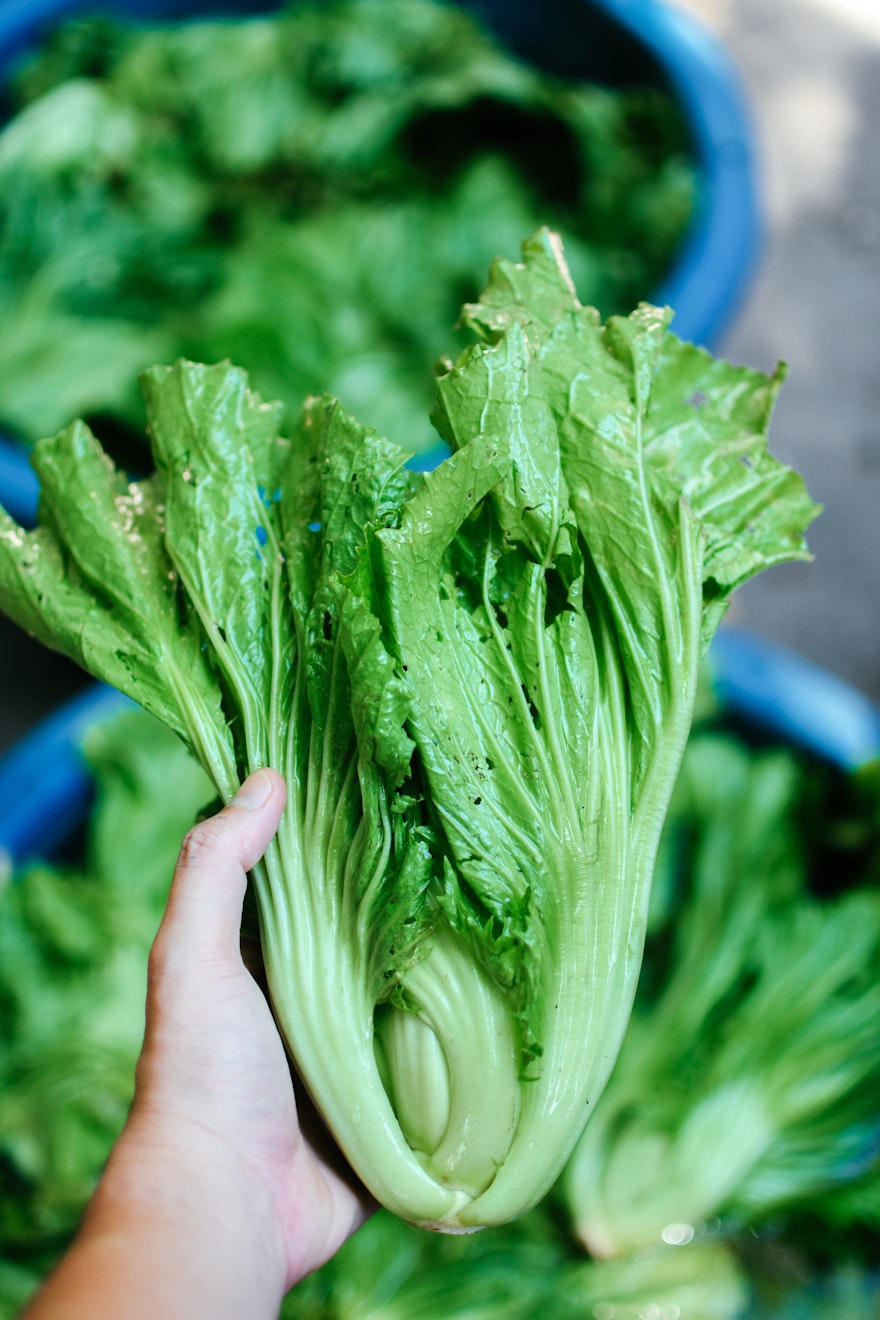
Allergy alert!
Though saag recipes might use mustard greens among the ingredients, they do not necessarily contain mustard - instead coming from a closely related plant to that which mustard seeds come from. However, the two may have cross-reactivity, and Mustard - one of the 14 major food allergens, will likely be present in the recipe in one form or another.
Chickpeas
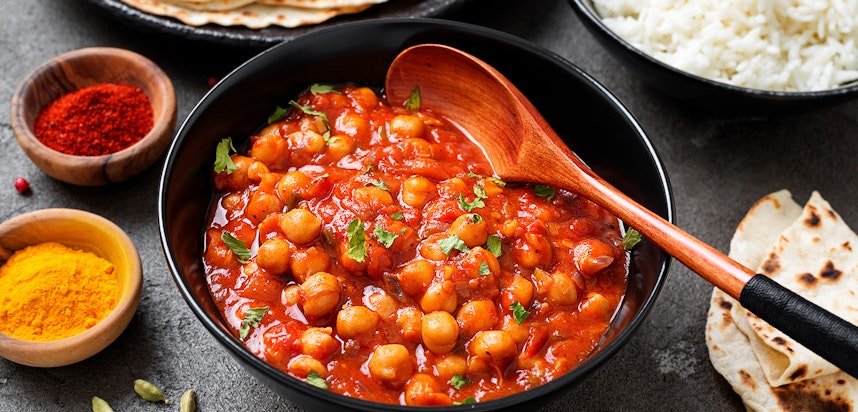
What are chickpeas?
Chickpeas are an annual legume, and especially associated with Mediterranean and Middle Eastern cuisine, though they are also in many popular Asian dishes - in fact India is thought to produce around 3/4s of the world’s chickpeas.
You may also be interested in…
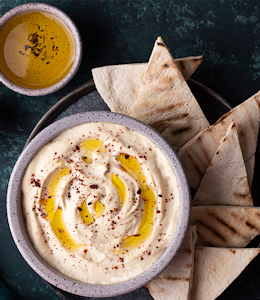
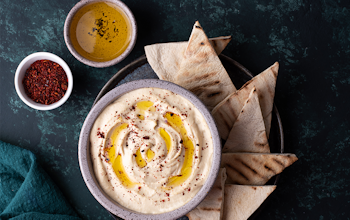
You may also be interested in…
Hummus ingredients, top tips and more…
ReadSometimes known as chana or chhana, garbanzo beans or even Egyptian peas, chickpeas were first known to be cultivated in Syria, and are classed as both a protein and a carbohydrate and are nutrient dense whilst being low in saturated fat.
What kind of chickpeas go well with curry?
The top Indian and Pakistani chickpea dish is Chana masala, which can be eaten alongside curry or used as a main curry dish in itself. To make it, whole chickpeas are cooked or fried in ghee alongside other ingredients such as chopped onions, chopped tomatoes, garlic, cumin, ginger, garam masala, coriander, turmeric, chillies and lemon juice.
For a lighter take, you can lightly cover whole chickpeas with spices and oil, and roast gently in the oven till browned.
Top tip
If using coriander, coriander seeds or lemon juice to make Chana masala, add them after cooking - just before serving. Both these ingredients can become bitter in a very hot pan.
Allergy alert!
Whilst chickpeas are not among the 14 major food allergens, they are a legume - to which allergies are currently rising. See our list of increasingly common allergens here.
You may also be interested in…
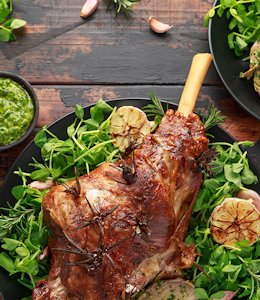
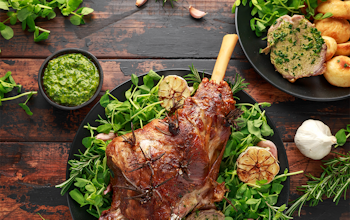
You may also be interested in…
